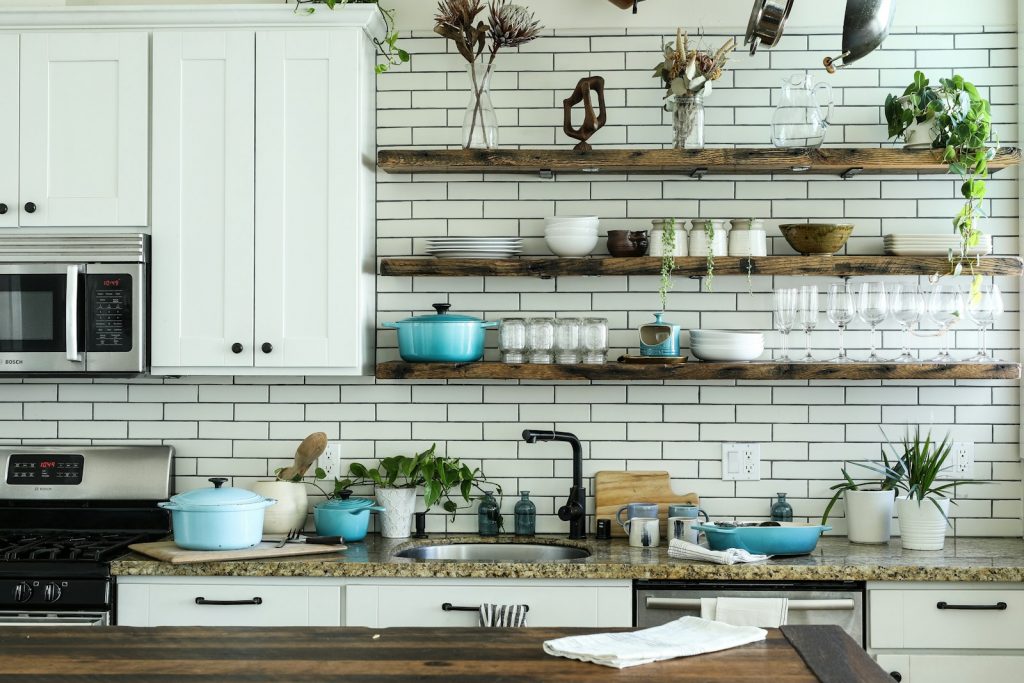Looking to renovate your kitchen with the planet in mind? Choosing sustainable kitchen countertops is a smart way to reduce your environmental impact, create a healthier home, and enjoy a stylish, long-lasting surface. This guide explores the best eco friendly countertops available, comparing their pros, cons, and green credentials—so you can make a choice that’s beautiful, practical, and kind to the Earth.
What Makes a Countertop Sustainable?
- Renewable or recycled content: Uses rapidly renewable resources or repurposed materials.
- Low-impact manufacturing: Minimizes energy, water, and emissions during production.
- Non-toxic and safe: Free from harmful chemicals and off-gassing.
- Durability: Long-lasting to reduce waste and replacements.
- End-of-life recyclability: Can be recycled, repurposed, or safely disposed of.
Top Eco-Friendly Kitchen Countertop Materials
| Material | Pros | Cons | Sustainability Highlights |
|---|---|---|---|
| Recycled Glass | – Unique, colorful appearance – Non-porous & stain-resistant – Durable & heat-resistant | – Can chip under heavy impact – Resin binders are not biodegradable | – Made from post-consumer glass – Diverts waste from landfills – Often produced locally |
| Bamboo | – Rapidly renewable – Harder than many hardwoods – Warm, natural look | – Needs regular sealing – Can scratch or stain if not maintained | – Grows quickly with minimal resources – Absorbs more CO₂ than many trees |
| Reclaimed Wood | – Unique character and warmth – Can be refinished – Adds rustic charm | – Requires sealing & maintenance – Not ideal for wet areas | – Repurposes old wood – Reduces demand for new lumber |
| Paper Composite (e.g., PaperStone, Richlite) | – Made from recycled paper – Durable, heat & stain resistant – Warm, matte finish | – Can scratch (but repairable) – Matte finish may not suit all tastes | – Diverts paper waste from landfill – Uses non-toxic, plant-based resins |
| Quartz (with recycled content) | – Extremely durable – Non-porous & hygienic – Low maintenance | – Not all quartz is eco-friendly – Some resins are petroleum-based | – Uses recycled glass/minerals – Lower-impact than quarried stone |
| Durat Solid Surface | – Made from recycled plastics – Seamless, customizable – Easy to repair | – Plastic-based – Limited availability in some regions | – Up to 30% recycled content – 100% recyclable at end of life |
| Natural Stone (Granite, Marble, Soapstone, Quartzite) | – Durable, long-lasting – Timeless appearance – Can be repurposed | – Quarrying is resource-intensive – Heavy, high transport emissions | – Long lifespan reduces replacements – Choose local stone for lower impact |
| Porcelain | – Made from natural clay – Heat, scratch, and stain resistant – Lightweight | – Can be brittle – Limited color/pattern options | – Low-impact production – Long lifespan |
Choosing the Best Eco Friendly Countertop for Your Kitchen
- For bold style and recycled content: Recycled glass or paper composite countertops offer unique looks and strong sustainability credentials.
- For a natural, warm feel: Bamboo and reclaimed wood bring renewable or repurposed beauty to your space.
- For durability and minimal maintenance: Quartz (with recycled content), porcelain, and natural stone are long-lasting and easy to care for.
- For a modern, seamless look: Durat solid surface and paper composites provide sleek, customizable options.
Tips for a Greener Kitchen Renovation
- Choose locally made or sourced materials to cut down on transportation emissions.
- Look for certifications like FSC (Forest Stewardship Council) for wood, Greenguard, or Cradle to Cradle.
- Ask about recycled content and end-of-life recyclability.
- Pair your sustainable countertop with other eco-friendly kitchen swaps for maximum impact!
Explore More Sustainable Kitchen Ideas
- The Ultimate Guide to an Eco-Friendly Kitchen (for Beginners & Families)
- 15 Easy Eco-Friendly Kitchen Swaps to Reduce Waste Today
- A Beginner’s Guide to Composting Kitchen Scraps (Even in Small Spaces)
- Choosing Eco-Friendly Pots and Pans: A Buyer’s Guide
Conclusion
Sustainable kitchen countertops come in a variety of materials, each with unique benefits and trade-offs. By considering recycled content, renewability, durability, and local sourcing, you can find an eco-friendly countertop that fits your style and values—helping you create a greener, healthier kitchen for years to come.
Sources
- Elemental Green: 15 Fabulous Eco-Friendly Countertops
- Kitchen Main: Top 10 Sustainable Kitchen Countertops to Consider in 2025
- Granite Selection: Eco-Friendly Countertops: 7 Sustainable Materials for Your Kitchen
- Atlanta Stone Creations: Eco-Friendly Countertop Materials and Options
- Hanex Solid Surface: 8 Eco Friendly Worktops for Kitchens


